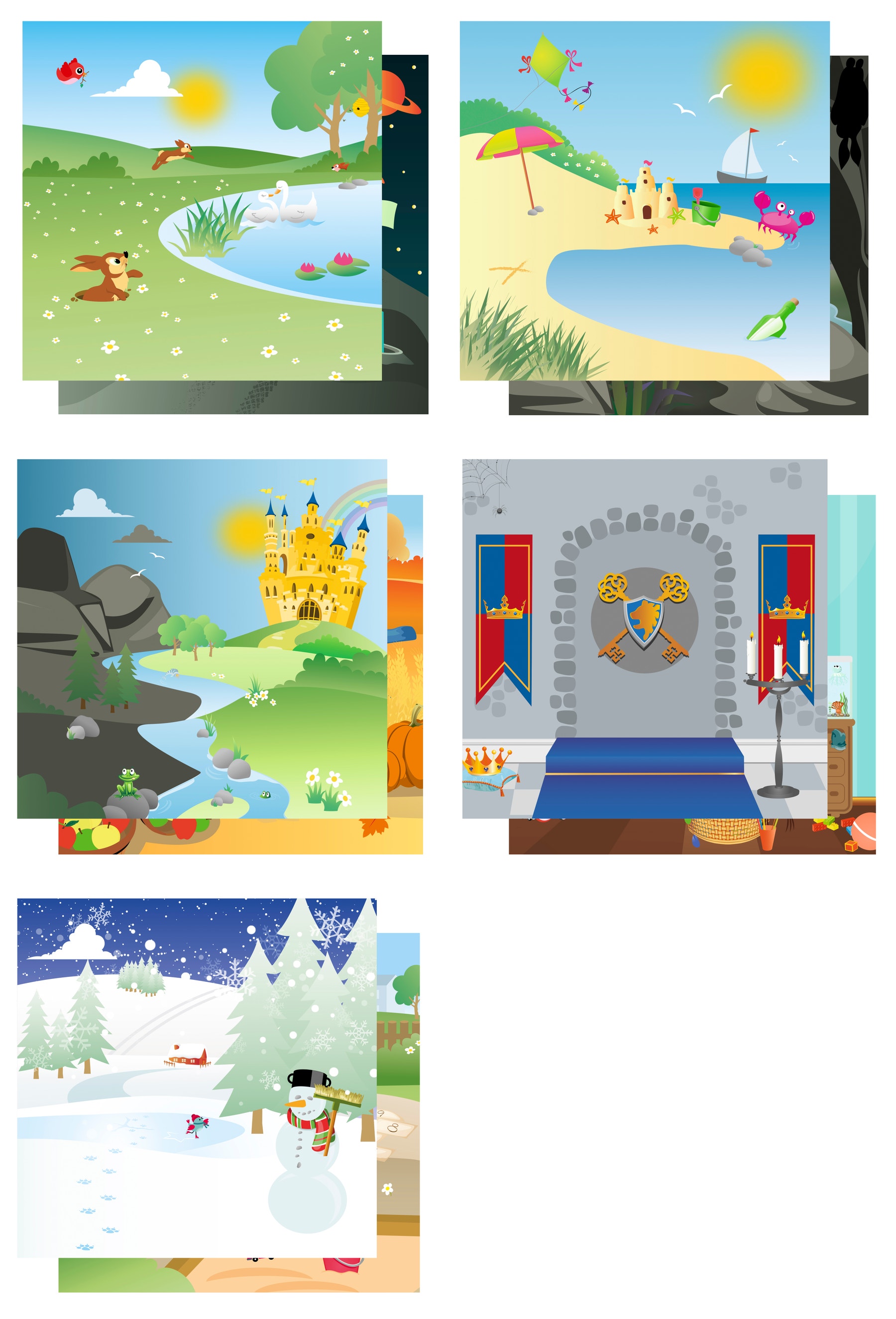The Princess and the Pea
Understand what makes a story and learn about sequence of events: beginning, middle, and end.

Prepare
Review this lesson plan and choose what you need from the Teacher Support box.
If necessary, pre-teach these related vocabulary words: beginning, middle, end, princess, pea, prince, queen, mattress, feather bed.
Consider the abilities and backgrounds of all your students and decide when and how to introduce and differentiate lesson content, activities, or concepts.
If the background cards are missing or broken, you can download them from the Additional Resources section of the Teacher Support box.
Connect
Prompt a discussion about stories by explaining that some stories, such as fairytales, often involve something magical that cannot happen in real life.
Ask the students to take turns naming different stories. If the students have trouble thinking of one, remind them of stories they have heard in class.
Tell the students they are going to listen to a famous story called The Princess and the Pea (or substitute a different story that is more relevant to your class).
After telling the story, discuss the story and ask the students to recall what happened.
Construct
- As a group, build the beginning of the story. Ask the students which background card is most like the setting at the beginning of the story. If the students cannot recall, reread parts of the story.

As a group, build the middle of the story. Begin retelling the story using the beginning and middle scenes, but do not retell the end of the story.
Discuss the end of the story and ask the students to recall what happened. Remove all the bricks from the first two scenes and ask the students to build the end of the story. Each student may use one building plate, stand, and background card for his or her scene.
Printing out duplicate images will make it possible for multiple students to use the same background card. Print the background images in “actual size” to ensure they fit in the stands.
For younger students, consider building first as a group, then ask the students to try rebuilding the end of the story on their own.
Contemplate
When the students have finished building, encourage them to take turns sharing their end scenes. Have them use the figures to act out the scene.
Consider asking questions like:
- Can you explain what happened at the end of the story? How did you show this in your scene? Give me an example.
- Did you like the ending of the story? Why or why not?
Continue
Explain that many modern stories have endings that do not tell the audience everything they want to know. Tell the students that this is why authors of books and screenplays often write sequels, which continue the original story. Give some examples.
Ask the students to consider what would happen in a sequel to The Princess and the Pea. (i.e., What would happen after the prince and princess married and put the pea in a museum?)
Encourage the students to build one scene from the The Princess and the Pea sequel. Remind them that this story has not yet been told so they can use their imaginations and tell it however they would like.
Did you notice?
- Ask guiding questions to elicit students’ thinking and their decisions while ideating.
Observation Checklist
Review the learning objectives and educational standards addressed in this lesson (Teacher Support box).
Share specific student responses and behaviors at different levels of mastery.
Use the following checklist to observe students’ progress:
- Students are able to retell and reenact events, including key details, from stories, songs, or rhymes.
- Students are able to understand the fundamental narrative structure and elements.
Teacher Support
Students will:
- Practice recalling and retelling the end of a story
- Learn about sequence of events: beginning, middle, and end
For up to 6 students.
CCSS.ELA-LITERACY.RL.K.2 With prompting and support, retell familiar stories, including key details.




